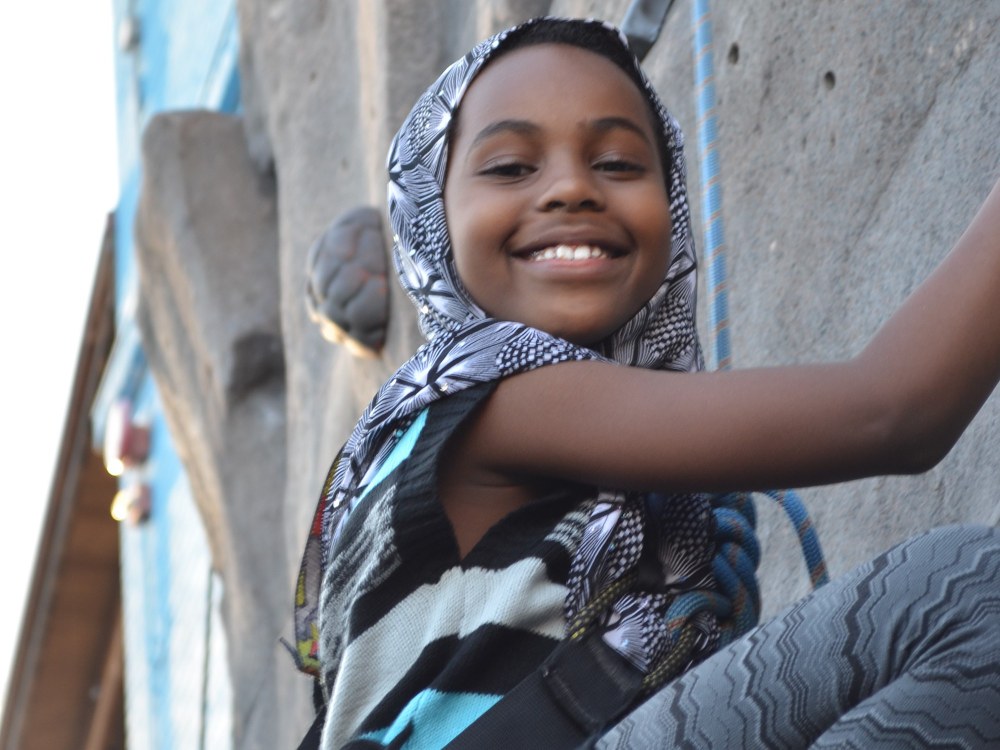
More and more each year, The Mountaineers receives questions about how to make our programs more accessible to diverse communities. 1A’s Joshua Johnson explores this question is his podcast Get Out: Nurturing A Bond Between Black People And Nature.
We listened to the podcast, and we recommend you listen to the entire thing, too. Here are our biggest takeaways:
“Is spending time in the wilderness … kind of a … white thing?”
While African Americans make-up 13% of the U.S. population, the National Park Service reports that they represent only 7% of annual park visitors. As we think about improving the accessibility of our programs, it is important to unpack the complex history of being in unknown territory and getting to know the outdoors.
“Black folks don’t do that.”
African Americans do have a connection to nature, and this connection goes deeper than camping and hiking in remote places. Rue Mapp, Founder and CEO of Outdoor Afro, notes that one of the primary problems is that the visual representation and narrative of our outdoor places and the outdoor experience is predominantly white. We don’t see many black people in the mainstream outdoor media, but that doesn’t mean there aren’t stories about black people in nature.
Getting out into nature doesn’t have to mean camping and backpacking. Gear and equipment, transportation, fear and perceptions, feeling welcomed … these are all real barriers to accessing the outdoors, but as Mapp highlights, the number one barrier is usually time. Carolyn Finney, Assistant Professor in Department of Geography at Kentucky University, adds that we need to think of nature and wilderness more broadly, including the nature in the places where we live. Making wilderness more accessible is not necessarily about getting everyone out to our National Parks, but it is important for everyone to have a sense of ownership of our public lands, and to want to protect these wild places.
“Nature is for everyone.”
Nature is for everyone, but we have to remember the history of our country. Not everyone is allowed to show up in those spaces in the same way. So how do you open the door to people who don’t think they can get out into nature?
Issues of race, prejudice, and bias still exist in outdoor spaces. There was a long period of time in our country when black people weren’t allowed to be in our protected wild places, and when they weren’t hired by organizations like the National Park Service. That’s not true today, but it was true for a significant period time, and Finney notes that a lot of the larger issues of race and diversity today extend from those same set of issues.
For many people, connecting with nature needs to happen through familiar communities. It is important to provide opportunities to create and embrace these new connections as a part of a group, and most importantly, to show someone who looks like them in leadership. When thinking about how to help diverse communities interact with nature, Mapp emphasizes that many parents aren’t comfortable sending kids to a new place with people from outside of their communities, and that many individuals aren’t comfortable recreating with a group that doesn’t reflect their personal identity.
What does this mean for The Mountaineers?
According to the experts like Rue Mapp and Carolyn Finney, an intentional push towards diversity and inclusion in our outdoor spaces requires groups to strive to build relationships, not transactions, with diverse communities. To feel comfortable in our wild spaces, individuals need to see examples of themselves in the outdoors. As an organization that is predominantly white - 86% according to our 2018 member survey, down from 94% in 2014 - we are probably not the community people of color will seek when searching for new opportunities to get outside. One of the top priorities in our next strategic plan, Vision 2022, is to invest in ways to make our programs and community more accessible to a more diverse population, which is supported by our Core Value of “Community”.
Like climbing a mountain, we will build this bridge one step at a time. We must look at our programs structurally, from the ground up and from the top down, to assure that we are approaching this work thoughtfully. As a recent Seattle Times article put it, “Thinking in terms of structures and patterns, not individual acts or good and bad people, is foundational. Putting ourselves in situations that challenge and stretch our racial worldviews, while uncomfortable, builds our racial stamina.”
Podcast Guests:
- Rue Mapp, Founder and CEO, Outdoor Afro
- Carolyn Finney, Assistant Professor in Department of Geography at Kentucky University and Author of "Black Faces, White Spaces: Reimagining the Relationship of African Americans to the Great Outdoors"
- J. Drew Lanham, Alumni Distinguished Professor of Wildlife Ecology at Clemson University, Birder, and Author of "The Home Place: Memoirs of a Colored Man’s Love Affair with Nature”
- Tyrhee Moore, Mountaineer and Outdoor Education Advocate
 The Mountaineers
The Mountaineers